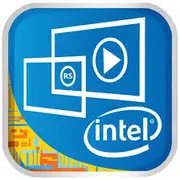Intel Core m3-8100Y

インテル Core m3-8100Y: モバイルタスクに最適なコンパクトなエネルギー効率
(分析は2025年4月のものです)
1. アーキテクチャと製造プロセス: 14nmの時代に3nm
2018年に発売されたインテルCore m3-8100Yプロセッサは、2025年のバジェットウルトラブックにまだ登場しています。そのアーキテクチャAmber Lake Yは、古い14nmプロセス技術に基づいており、現代のAppleの3nmチップやAMDの4nmソリューションとは対照的です。しかし、これはコンパクトデバイスのニッチでの relevanceを失わせることはありません。
主要な仕様:
- 2コア / 4スレッド (ハイパースレッディングによる)
- ベースクロック: 1.1GHz, ターボブーストで最大3.4GHz。
- インテル UHD グラフィックス 615: 24の実行ユニット、最大900MHzの周波数。
- キャッシュ: 4MB L3。
アーキテクチャの特徴:
- 低消費電力設計: 最小のエネルギー消費を最適化。
- パッシブ冷却: 大半のデバイスでファンがない。
- 統合グラフィックス: DisplayPort経由での4K@60Hzをサポートするが、現代のゲームには弱い。
2025年に14nmの理由は?
ノートパソコンメーカーは、m3-8100Yの安価さから使用を続けています。たとえば、中国のChuwiやTeclastなどのブランドは、このプロセッサを300~400ドルのトランスフォーマブルタブレットに搭載して「基本的なWindowsデバイス」を提供しています。
2. TDP 5W: パフォーマンスを犠牲にした静音性とコンパクトさ
TDP(熱設計電力)5Wは、このプロセッサの主な「特徴」です。これにより:
- 冷却装置が不要になり、厚さ10mm未満の筐体が可能に。
- 40~50Whのバッテリーを搭載したデバイスで、バッテリー持続時間が10~12時間に拡大。
裏側:
- 長時間の負荷(例えば、ビデオレンダリング)では、オーバーヒートによって周波数がベースクロックの1.1GHzに低下する。
- マルチタスク(ブラウザ、Word、Zoomの同時実行)では、ラグが目立つ。
3. パフォーマンス: 2025年のCore m3-8100Yは何ができるか?
オフィス作業:
- Google ドキュメント、Microsoft 365: Chromeで10以上のタブを開いても理想的な流暢さ。
- Zoom/Teams: HDでのビデオ通話には対応するが、4Kや背景フィルターを使うとラグが発生。
マルチメディア:
- 4Kビデオ: Quick Syncによるハードウェアデコードでスムーズ再生。
- フォトエディター: Lightroom Mobileは使用可能。Photoshopは重いレイヤーでは不適。
ゲーム:
- CS2(720p、低設定): 25~30FPSでの低下を伴う。
- Stardew Valley、Among Us: 安定した60FPS。
- クラウドゲーミング: Xbox CloudやGeForce Nowを通じて最適。
ターボブースト: 一時的な加速
ターボモード(最大3.4GHz)では、アプリケーションの起動を加速するが、20~30秒後には周波数が下がる。例えば、50MBのPDFを開くのは4秒のところ2秒で済むが、同じファイルをPDF/AにエクスポートするのはCore i3-1215Uより遅い。
4. 使用シナリオ: m3-8100Yは誰におすすめ?
- 学生: ノート、ウェビナー、Netflixに適している。
- オフィスワーカー: メール、文書、スプレッドシートの作業。
- 旅行者: 長時間のバッテリー持続と1kg未満の軽量性。
おすすめしない人:
- ゲーマー(クラウドゲーミングを除く)。
- デザイナーやビデオ編集者。
- 仮想マシンを使用するユーザー。
5. バッテリー持続時間: 5Wが稼働時間に与える影響
m3-8100Y搭載ノートパソコン(例: Lenovo Yoga 730)では、バッテリー45Whで10~12時間の稼働時間を達成しています。
- 画面の明るさは150ニト。
- ブラウザとオフィスアプリを活発に使用。
省エネルギー技術:
- インテル SpeedStep: 動的クロック変更。
- Cステート: 使用しないコアを無効化。
- パネル自己リフレッシュ: 静止画像時のGPU負荷を軽減。
アドバイス: 電源設定でターボブーストをオフにすると、1~2時間のバッテリー延長が可能です。
6. 競合他社との比較: AMD、Apple、過去のインテル世代
- AMD Ryzen 3 7320U (4コア, 15W): マルチスレッド作業で30%速いが、アクティブ冷却を必要とする。
- Apple M1 (2020): 同等のTDPで3~4倍のパフォーマンス。M1を搭載したデバイスは現在$600から。
- インテル Core i3-1115G4 (2020): 2コアだが、より強力なIris Xeグラフィックスを搭載。
結論: m3-8100Yは現代の類似製品には劣るが、価格の点では優れています。
7. 長所と短所: 機能のバランス
強み:
- 静音性(ファンなし)。
- 低価格のデバイス($300~500)。
- Windows 11とLinuxのサポート。
弱点:
- 古くなったアーキテクチャ。
- 限られたマルチタスク能力。
- PCIe 4.0とThunderbolt 4のサポートがない。
8. ノートパソコン選びの推奨事項
デバイスの種類:
- ウルトラブック: 例えば、HP Pavilion Aero 11(2025年)で$450。
- トランスフォーマブルタブレット: Chuwi HiPad X Pro(キーボード付属)$320。
- ミニノート: コンパクトを好む方のためのGPD Pocket 4($600)。
注意すべき点:
- RAM: 最低8GBのLPDDR3。
- ストレージ: SSD256GB(eMMCは推奨しません)。
- 画面: フルHD解像度のIPSパネル。
アドバイス: 4GB RAMのモデルは避けましょう―Windows 11が遅くなります。
9. 最終的な結論: m3-8100Yは誰のために作られたのか?
2025年のインテルCore m3-8100Yは、次のような人々に最適な選択です。
- 最大限軽量で静かなノートパソコンを求める。
- $500以上の支払いをする気がない。
- 基本的な作業用にデバイスを使用。
主要な利点: 自立性、ポータビリティ、入手しやすさ。ウェブサーフィンと文書作業に限られるニーズがある場合、このプロセッサは依然として有効です。ただし、将来的なアップグレードを考える場合は、ARMベースのモデル(例: Qualcomm Snapdragon X Elite)やApple Siliconを検討する方が良いでしょう。
基本
CPUの仕様
メモリ仕様
GPUの仕様
その他
ベンチマーク
他のCPUとの比較
ソーシャルメディアで共有する
または当サイトへのリンクを追加
<a href="https://cputronic.com/ja/cpu/intel-core-m3-8100y" target="_blank">Intel Core m3-8100Y</a>